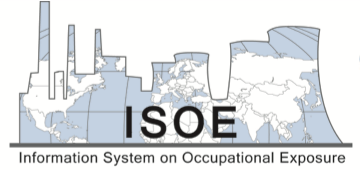North American ALARA Virtual Workshop: 2021 ALARA Challenges & Lessons Learned
Tuesday, June 29, 2021, 12:00 pm - 14:00 pm Est (New York) using Illinois.ZOOM.US protected virtual platform.
For those attending the meeting, attached you will find a non-disclosure document that you will need to state via email back to me that you agree. https://illinois.zoom.us/meeting/register/tZAucu6qrj0oHNby3JTNr_9IHdzCrTvHtJ_p
The agenda for the Tuesday session is as follows:
12:00 pm est Welcome - Dr. John M Palms, NATC Honorary Board Chair
12:05 pm Highlights of 2020 Preliminary USA Country Report
12:10 pm Mr. Joseph Jaegers LaSalle Country Reactor Recirculation Control Valve CRUD Decon using Ultrasonic System
12:50 pm Questions and Answers
13:00 pm Next NATC ALARA ZOOM Operating Event Session
Presentation - LaSalle Country (BWR) first Flow Control Valve Weld Repair by Joseph Jaegers. The paper discusses a potential ALARA Game Changer: Use of High-Efficiency Ultrasonic CRUD Removal & Metal Filter Implementation to preclude replacement of highly radioactive BWR piping and component. The first repair of the BWR Flow Valve is discussed in detail in a 60- minute presentation. Over 150 Illinois contract welders were used in the flow valve repair project due to the as found condition of the valve.
The LaSalle County Flow Valve Repair and source term reduction will be discussed by Joe Jaegers, LaSalle County RP Technical Manager. Joe Jaegers will present a discussion of the use of High-Efficiency Ultrasonic Mitigation of CRUD on BWR plant components to significantly reduce dose rates. This potential “Industry Game Changer” can save the need to replacing highly radioactive piping and components. Ultrasonic transducers are utilized in liberation of surface contaminants during nuclear fuel cleaning. The transducers have been observed to remove both tenacious and non-tenacious crud. They are also used to resuspend contaminants in AMFM filtration systems to allow consolidation of material, extending the life of metal filters, and reducing radwaste costs.
Chemical decontaminations or replacements of components are often difficult to cost-justify. This has proven even more difficult in the current economic situation of the nuclear industry. This emerging technology opens the door to a new era of cost-effective dose reduction with a reusable solution that can be complemented with mobile regenerable filtration to minimize costs associated with disposing of liberated activated corrosion products. External ultrasonic cleaning allows liberation of corrosion layer from inside subject piping and suspension in solution to be sent to filter or tank for processing without system breach. For larger components, or when access is available inside a system such as an open valve after breach, introduction of ultrasonic transducers allows internal mitigation resulting in a significant reduction of the radiological hazard with decon factors similar to chemical decontamination.
Mr. Jaegers, John Moser, and the LaSalle County team were awarded the John M. Palms Outstanding Innovation Award for the remarkable results of the HE-UMS at LaSalle County. Joe Jaegers was awarded the 2021 ISOE Young Professional’s Distinguished Paper Award.
Registration for the NATC NPRE ALARA Virtual Workshop:
June 29, 2021, NATC NPRE ALARA Workshop is open free of charge to dues-paying ISOE utility and regulatory members. Due to US Department of State import/export regulations, attendance by Russia, Chinese and other excluded countries is not permitted. Participants need to sign the NPRE Department Head Non-Disclosure Agreement to protect US ALARA Technology. Upon registration, the NPRE non-disclosure agreement will be sent to your email for your acknowledgment.
Please register by sending an email to Amy Moeller, NATC Executive Administrator at almoeller88@gmail.com or call 260 930-0753. Please provide your name, title, affiliation, and email with your registration email.
Feedback from the past 6 NPRE ALARA virtual workshops has been to limit the sessions to 1-2 hours. More NATC NPRE ALARA virtual workshops will be scheduled each month to provide continuing education opportunities during the pandemic travel ban. Also, the outage lessons learned from the winter and spring outage will be provided to outage planners prior to the fall 2021 outages to avoid the reoccurrence of ALARA OEs.
Below you will find the information for the CHP Continuing Education credits are approved for 1 hour for the January 3-6th 2021 NPRE NATC ALARA Symposium sponsored by the University of Illinois.
| ID Number | Course Title | Sponsor | Credits | Valid from/to |
| 2019-01-01-2244 | North American ISOE ALARA Symposium University of Illinois | North American Tech Ctr | 32 | 2019-01-01 - 2022-12-31 |
Another feedback suggestion was to schedule recorded sessions for Asia at 20:00 EST on June 29 and Europe at 6:00 am EST on June 30 & July 1 2021. The virtual ALARA Workshop link will be provided when your registration is received.
Due to weather conditions in the US and outage schedule extension, the announcement of the spring virtual ALARA workshop was delayed until approval was received to proceed by the NPRE Department Head. If you are not available for the June 29 sessions, the recorded virtual ALARA workshop will be repeated during the next few months based on ISOE member feedback.
The Tuesday, July 6, 2021, ISOE Bureau Chair's Virtual ALARA Operating Events Session will be discussing Palisades Ag-110m characterization during the last Palisades outage prior to scheduled shutdown and Ag-110m removal from PWR coolant.
The Tuesday, July 13, 2021, ISOE Bureau Chair's Virtual ALARA Operating Events Session will present the CANDU Refurbishment ALARA Programs, Accomplishments, and New Technology.
Please provide suggestions to the NATC NPRE virtual ALARA OE Planning Committee on topics you would like presented in July and August prior to the fall refueling outage period.
Thank you for your support of the international ISOE ALARA information exchange program to reduce worker dose and prevent the reoccurrence of ALARA OEs and regulatory findings.



